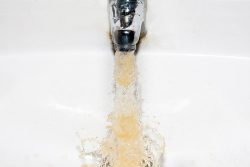The Dangers Of Well Water Contamination
 Water is one of the most essential resources for survival, with approximately 780 million people worldwide lacking access to safe drinking water. While municipal water supplies are typically monitored and treated for contaminants, many individuals rely on well water as an alternative source. However, well water is not immune to contamination. In this blog post, we will explore the dangers associated with well water contamination and the importance of testing and preventing it.
Water is one of the most essential resources for survival, with approximately 780 million people worldwide lacking access to safe drinking water. While municipal water supplies are typically monitored and treated for contaminants, many individuals rely on well water as an alternative source. However, well water is not immune to contamination. In this blog post, we will explore the dangers associated with well water contamination and the importance of testing and preventing it.
Health Risks
1. Bacterial Contamination
Bacteria are one of the most common contaminants found in well water. Coliform bacteria, including E. coli, can cause various gastrointestinal illnesses, including diarrhea, nausea, and vomiting. These illnesses predominantly affect children and the elderly, who often have weakened immune systems.
2. Nitrate Contamination
Nitrate contamination is another significant concern associated with well water. High levels of nitrates in drinking water can lead to a condition known as methemoglobinemia or “blue baby syndrome.” This condition reduces the ability of the blood to carry oxygen, resulting in serious health consequences, particularly for infants.
3. Chemical Contamination
Well water can also be contaminated by various chemicals, such as pesticides, fertilizers, and industrial pollutants. These chemicals can pose significant health risks, including increased cancer rates, reproductive problems, and neurological disorders. Prolonged exposure to these contaminants may have long-term health effects that can be challenging to detect initially.
Environmental Factors
1. Agricultural Activities
Agricultural practices, such as the use of fertilizers and pesticides, pose a significant threat to well water. These chemicals can seep into the ground, eventually contaminating nearby groundwater sources. The prevalence of chemical pesticides in groundwater has been linked to intensive farming practices, highlighting the need for increased regulation and monitoring.
2. Industrial Activities
Industrial activities can also contribute to well water contamination. Disposal of toxic substances and improper handling of hazardous materials can contaminate the soil and groundwater, leading to serious health risks. Industrial sites need to implement appropriate strategies and regulations to prevent contamination and protect local water sources.
3. Natural Sources
Even natural sources can contribute to well water contamination. For example, nearby sewage systems can leak, seep, or overflow, contaminating groundwater with harmful bacteria and viruses. Additionally, the presence of high levels of minerals, such as arsenic or lead, in the soil can leach into the groundwater, posing health risks to those who rely on well water.
Prevention and Testing
1. Regular Water Testing
Regular well water testing is crucial for identifying and addressing contamination issues promptly. Testing should be conducted at least once a year or whenever there are changes in the water’s appearance, taste, or odor. It is essential to check for various contaminants, including bacteria, nitrates, heavy metals, and other chemicals. Reliable water testing kits are available, or one can hire professionals for more accurate and comprehensive analysis.
2. Proper Well Maintenance
Maintaining the well properly can significantly reduce the risk of contamination. Ensuring the well is properly sealed and protected from external contaminants like surface water, animals, and pests is vital. Regular well inspections can help identify potential issues and promptly fix any damages. It is also advisable to keep records of maintenance activities and water testing results for future reference.
3. Treatment Systems
Installing and maintaining water treatment systems can provide an added layer of protection against contamination. Filtration systems, such as activated carbon filters and reverse osmosis systems, can help remove potentially harmful substances. Additionally, disinfection methods like chlorine or ultraviolet (UV) purification can effectively kill bacteria and other microorganisms.
Conclusion
Well water contamination poses significant dangers to human health and the environment. Bacterial contamination, nitrate contamination, and chemical pollution are just a few of the risks associated with relying on well water. It is crucial to regularly test well water, implement proper well maintenance, and consider installing treatment systems to mitigate these risks. By being proactive in preventing well water contamination, individuals can safeguard their health and enhance their overall well-being.
Got Questions? Let Us Help!
Categorised in: Well Water
